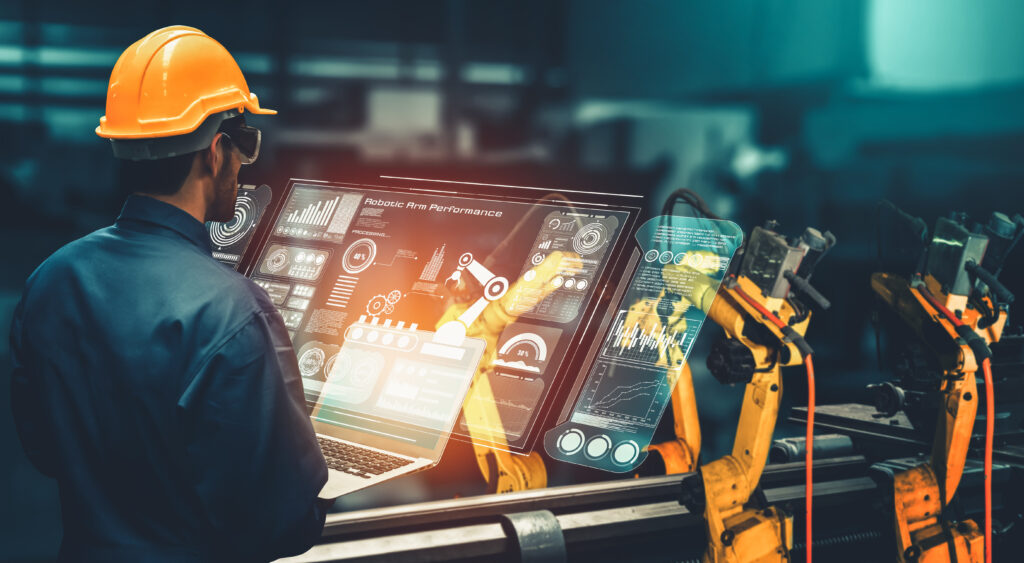How Artificial Intelligence Drives Value to Warehouse Automation
Artificial intelligence (AI) is already behind many productivity improvements in our distribution centres (DCs) and warehouses. According to Gartner, “Artificial intelligence (AI) in the supply chain consists of a toolbox of technology options that help companies understand complex content, engage in a natural dialogue with people, enhance human performance and take over routine tasks.”

How warehouses benefit from AI Technology
A smart warehouse uses interconnected technology tools to drive operational efficiencies. The entire process from when goods are received in the warehouse, identified and sorted, processed, and packaged for despatch, can benefit from AI. It is not only large e-retailing organisations such as Amazon, Alibaba, and Tesco that are involved; mid-size and emerging SMEs are now realising the benefits of better inventory management, improved communications, and streamlined processes.
Automated robotic vehicles use AI-powered vision to travel without colliding. They can handle repetitive tasks including packing, picking, carrying inventory, and fulfilling orders faster than human workers. Machine learning is one of the applications of AI that allows us to learn from experience. Data is gathered from sensors that detect patterns of behaviour and human activity so that we can improve workflow. Speech recognition and voice-activated technology enable workers to work hands-free and more safely
6 ways AI is transforming warehouse operations
1.
Many of the benefits of AI are related to the use of data. Every day warehouse operations create piles of data: customer orders, inventory statistics and delivery schedules. AI applications can offer insights into the current situation by recognizing patterns of activity where productivity can be improved.
2.
One of the most obvious benefits of AI is to gain better visibility and control over inventory. Digital cameras are routinely used to monitor stock levels and provide alerts for restocking. Managers can use data to improve inventory management by redesigning layouts, improving walking routes and speeding up replenishment.
3.
Sending data and instructions via humans can result in miscommunication and mistakes. Manual record keeping is prone to human error – automating transactions with embedded rules produces fewer mistakes and speeds up processing. Wireless technologies have revolutionised internal communications by providing system monitoring and control at speed. AI ensures there is only one source of information to drive decision-making.
4.
AI will not eliminate human labour from the warehouse but it can help make tasks easier and speed up operations. Machines work 24/7 and are always on. Humans need holiday breaks and sick leave. Automated AI-driven solutions will likely replace some workers, bring down resource costs and assist with labour shortages.
5.
AI solutions can monitor work patterns and predict areas where accidents are likely to happen by constantly analysing activities and assessing a risk score them. This prompts action to improve warehouse layouts to reduce future accidents and thus avoid loss of life. Warehouse accidents are a major cause of concern and expense.
6.
Supply chain disruptions are constant challenges. We will continue to face challenges that can’t be predicted. AI can help supply chain businesses prepare contingency plans and map scenarios to manage their warehouse operations and inventory in difficult times.
There are still some challenges
The widespread use of AI applications in warehousing is still not there. Research and development are continuing but it is costly. Only large organisations can afford the investment required to design their own AI solutions. Mid-size companies and smaller companies are likely to opt for third-party software-as-a-service solutions (SaaS) that include AI technology.
There is integration required in the implementation process. We need to manage the human interface. Managers must be able to monitor the data and even override AI decisions when necessary. There will still be human involvement in understanding issues that the AI-based solution cannot solve. AI and robotics improve productivity and release people from performing mundane and unfulfilling tasks. But there are still concerns that AI may result in job losses although other customer-facing jobs are being created that need the human touch.
There is no doubt that AI-driven automated solutions will expand and become more affordable in 2023. They will become a feature in distribution centres replacing manual systems that will no longer be practical or efficient enough to enable organizations to remain competitive.
SCCG helps you understand the complex needs of AI in warehouse environments and how you can use it to drive efficiency whilst driving down cost in your warehouse. Supporting a wide variety of logistical applications for distribution, manufacturing, and e-commerce companies, we can use our expertise to support your AI goals.














